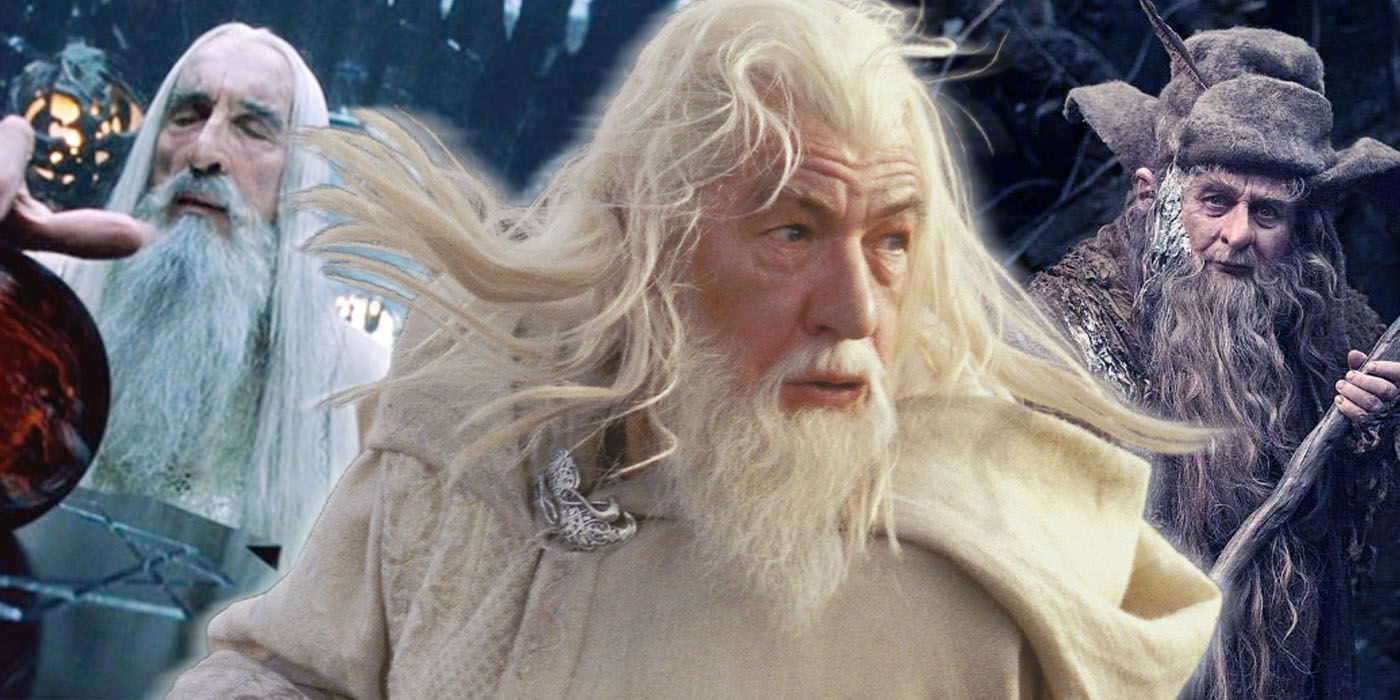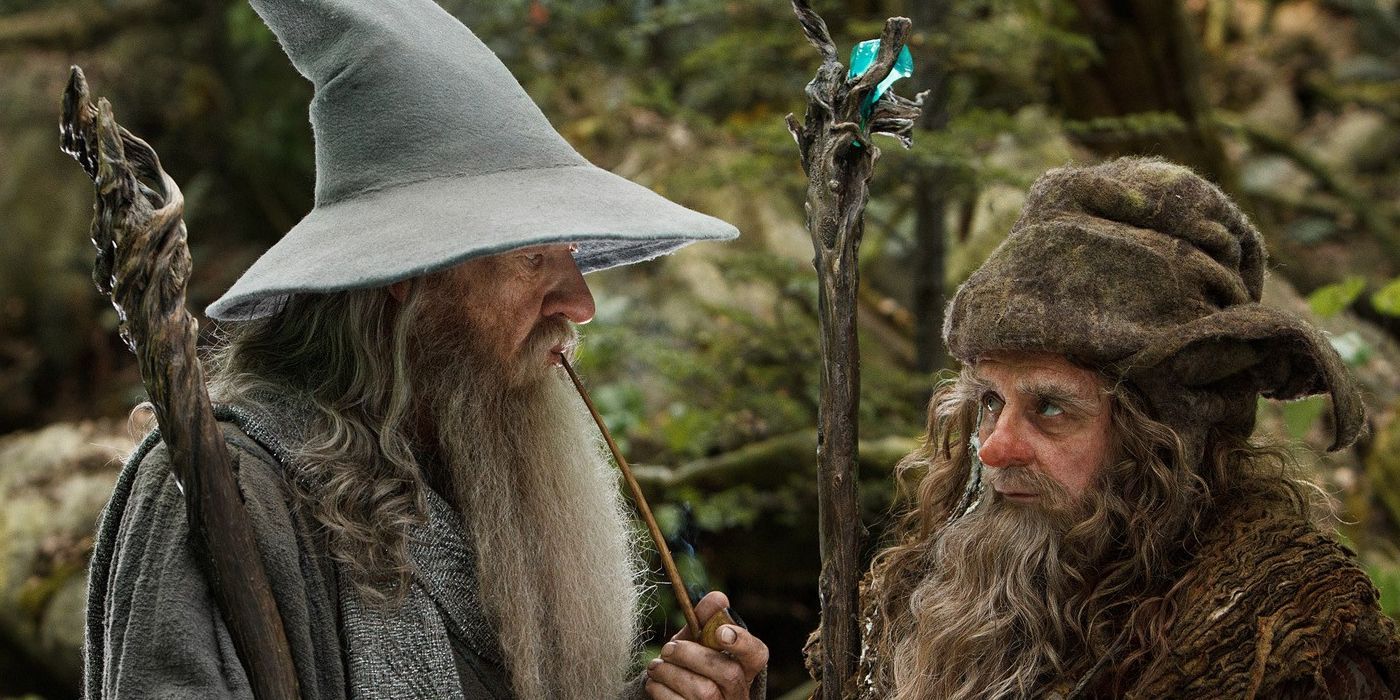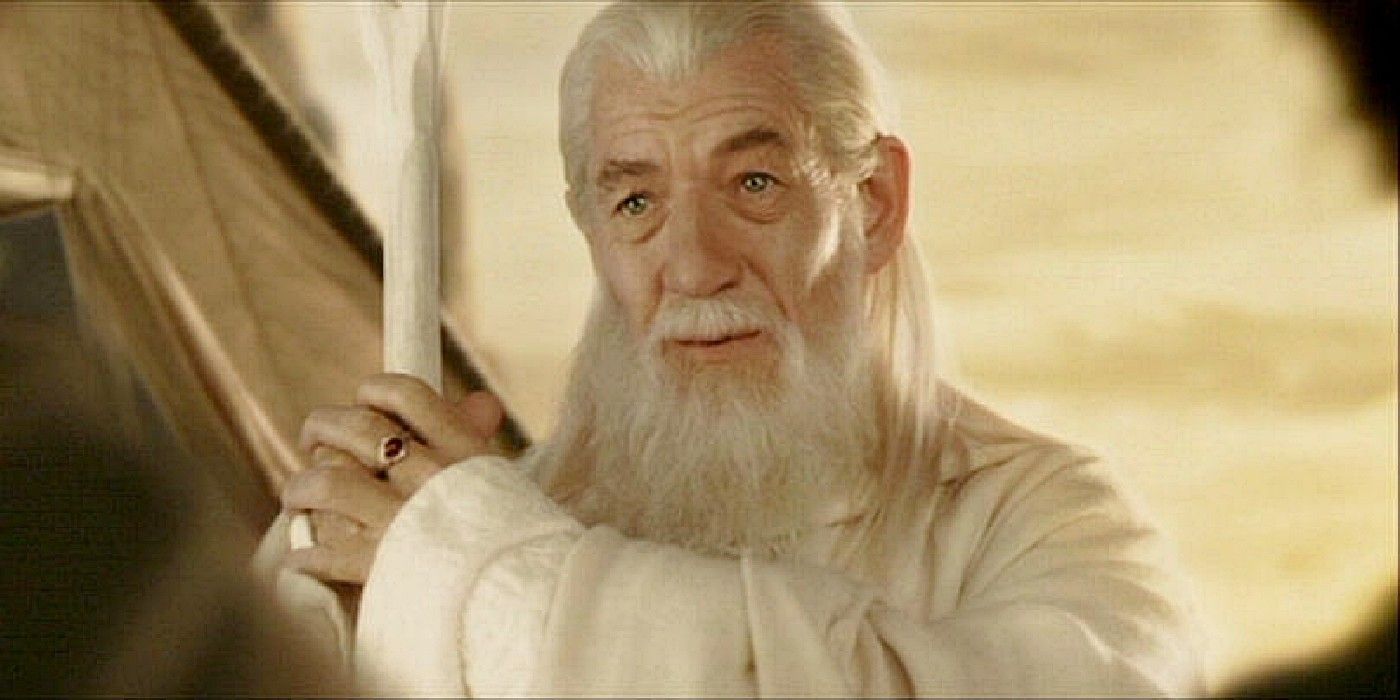The following contains spoilers for the first two episodes of The Lord of the Rings: The Rings of Power, which premiered Sept. 1 on Prime Video.
Gandalf and the other wizards of Middle-earth were never as they initially appeared. Though they held the guises of old men, they were actually far older and more powerful. Gandalf, in particular, often mentions his larger responsibilities, and his dramatic return from the dead in The Lord of the Rings: The Two Towers reflected his status as something more than human. The movies and similar offshoots kept his origins mysterious, as did J.R.R. Tolkien when he originally penned the character in the novels The Hobbit and The Lord of the Rings. But the author was renowned for his details and went into greater length about the wizards and their origins both in the appendix to his celebrated trilogy and ancillary works like The Silmarillion.
The debut of The Lord of the Rings: The Rings of Power on Amazon Prime Video has brought renewed focus to the question, as the series focuses on the formative events that shaped the course of Middle-earth's destiny. According to Tolkien, the wizards had a strong hand in those events, and the arrival of a man in a meteor crater in Season 1, Episode 1, "A Shadow of the Past," suggests that at least one of them might have finally arrived. But is he truly a wizard? And if he isn't, then how did the wizards first arrive in Middle-earth?
Who Are the Wizards in Tolkien's Middle-earth?
The Silmarillion covers the history of the wizards, who are actually Maiar: spirits of light akin to angels who assisted in the creation of Middle-earth. They served the more powerful Valar, who arrived on Middle-earth to give it shape and purpose. Like the angels in John Milton's Paradise Lost, some of the Maiar were corrupted by Morgoth: "the great foe" referred to at the beginning of "A Shadow of the Past." That included the likes of the Balrog from The Lord of the Rings: The Fellowship of the Ring, as well as Sauron, Morgoth's chief servant who took his master's place after his defeat.
The remaining Maiar stayed true to their purpose as staunch allies of Middle-earth. As spirits, they could readily change their shape and would often walk hidden among the people of Middle-earth to provide aid and wisdom. Sauron retained the ability after his fall from grace and used it to trick the elves into teaching him the magic of ring-making. That eventually resulted in a war with Middle-earth, ending with Sauron's defeat at the Battle of Dagorlad, which concluded the Second Age and opened Peter Jackson's adaption of The Fellowship of the Ring.
Approximately 1,000 years later -- 2,000 years before the events of The Lord of the Rings -- the Maiar became aware that Sauron's power was growing again. According to The Silmarillion, the triggering event was the fall of the southern part of Mirkwood Forest to a being known as The Necromancer, who was suspected of being Sauron in disguise. The Maiar agreed to send five of their number to Middle-earth in the form of old men to bring aid and guidance to the races there. Though they possessed great power -- far more than elves or mortal humans -- they rarely displayed it directly, preferring instead to offer council and leadership. Gandalf ultimately succeeded in their appointed task: uniting the people of Middle-earth against Sauron and ensuring that The One Ring was destroyed.
How Did the Wizards Arrive in Middle-earth?
The exact manner of the wizards' arrival is only vaguely referenced in Tolkien's text: The Silmarillion states only that "they came from over the Sea." That strongly suggests that they arrived from The Undying Lands, the continent to the west of Middle-earth on the other side of The Sundering Seas. The elves traveled from there to Middle-earth at the beginning of "A Shadow of the Past" and returned there at the end of the War of the Ring (as did Gandalf, and Frodo and Bilbo, who were permitted to travel there as Ringbearers). It's not unreasonable to assume that the wizards arrived in Middle-earth by boat and -- owing to the secrecy of their mission and their true nature -- informed no one of their arrival.
The timetable also puts to rest the notion that the man in the crater in "A Shadow of the Past" was one of them. In the first place, the timetable is thousands of years off; The Rings of Power takes place well before the Battle of Dagorlad, leaving millennia before the wizards' first appearance. He's more likely Sauron, here to begin his mischief with ring-making. The imagery of fire and fury accompanying the figure matches him more than the wizards, echoing the fall of Lucifer in Paradise Lost. The wizards operated in more secrecy as well, and the fact that they were sent to Middle-earth for a given purpose belies the seemingly accidental arrival of the man in the crater. However they arrived, they did so with far more subtlety than he.
New episodes of The Lord of the Rings: The Rings of Power stream every Friday on Prime Video.



